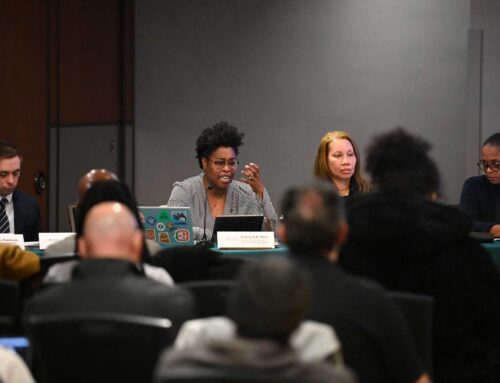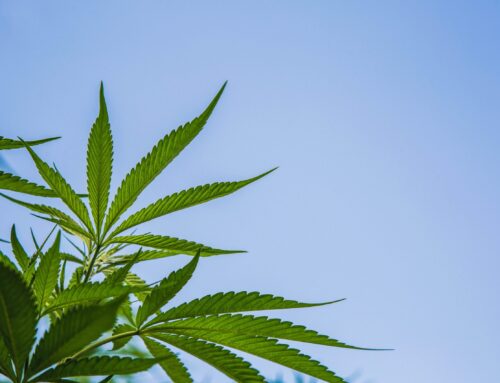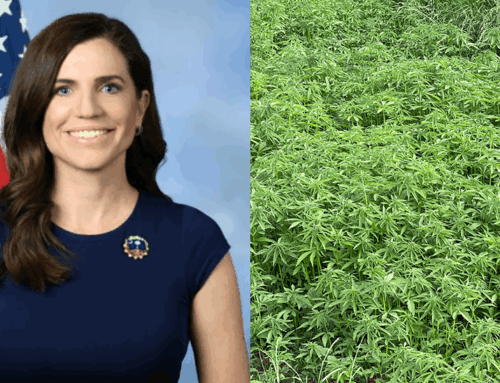Issues of the Environment: A dive into Ann Arbor’s ‘Bluebelt’ program
October 29, 2025
Overview
- Ann Arbor’s new Bluebelt program is now open for applications. The Bluebelt expands the city’s existing Greenbelt land preservation work to focus specifically on protecting drinking water and natural hydrology within the Huron River watershed. The city will use conservation easements and land acquisitions to preserve wetlands, riparian corridors, and groundwater recharge areas that feed the city’s source water. The Bluebelt’s boundary was approved and announced by the city in 2024 as part of the Ann Arbor Water Department’s broader Source Water Protection strategy.
- The Bluebelt is funded through the same voter-approved Open Space and Parkland Preservation millage that sustains the Greenbelt program, using tax revenue, grants, and landowner partnerships to secure properties critical to water quality. The program will direct acquisition efforts to areas upstream of Ann Arbor in townships such as Lodi, Webster, and Scio, where runoff and development can affect the Huron River. The city will coordinate with the Huron River Watershed Council and regional land conservancies to identify priority parcels for protection.
- Ann Arbor’s Water Treatment Division and Greenbelt Advisory Commission are developing hydrologic scoring criteria for the Bluebelt, ensuring parcels are selected based on hydrologic function and their contribution to source water protection. These criteria prioritize land that contributes to filtration, flood reduction, and nutrient retention. Parcels will be selected for their measurable value in maintaining clean source water, reducing phosphorus and nitrogen loads, and supporting groundwater recharge. The process will rely on data about groundwater recharge zones, stream buffers, and floodplain connectivity. Future acquisitions under this framework will require approval by the Greenbelt Advisory Commission and City Council.
- The Bluebelt complements Ann Arbor’s long-standing environmental programs, including floodplain management and stormwater initiatives, by focusing on preventive land protection rather than downstream infrastructure costs. It is designed to reduce sedimentation, nutrient runoff, and pollution that can impact treatment costs and drinking water quality.
- In 2025, the city began integrating Bluebelt priorities into new Greenbelt acquisitions and outreach to landowners. This represents a shift from farmland and open-space conservation toward a science-based watershed protection strategy that directly supports Ann Arbor’s climate resilience and water quality goals.
Transcription
David Fair: This is 89.1 WEMU, and today, we’re going to talk land and water in Ann Arbor. I’m David Fair, and welcome to this week’s edition of Issues of the Environment. Many in Ann Arbor and surrounding areas are already familiar with the city’s Greenbelt Land Preservation Program. Well now, the city is going to be layering on a Bluebelt component to the effort. In short, it will prioritize voter-authorized land use purchases to most directly safeguard the city’s drinking water supply. Now, there’s a lot to know about the program, where it’s headed, and that’s why we’ve invited Rosie Pahl Donaldson to join. Rosie is a land acquisition specialist for the City of Ann Arbor. And thanks so much for making time today! I appreciate it!
Rosie Pahl Donaldson: Thank you for having me, David!

Rosie Pahl Donaldson
David Fair: How do you define a Bluebelt, Rosie?
Rosie Pahl Donaldson: We define this Bluebelt by the land in the Huron River Watershed upstream of where the city pulls its drinking water at Barton Pond and then, for us, cut off at the county line for various reasons. There are a few other similar programs across the country that do similar things, most notably New York City has a source water land preservation program.
David Fair: Well, let’s put it in context of the Greenbelt and the city’s voter-approved 2003 Open Space and Parkland Preservation program. How does the Bluebelt layer in with the goals and missions of those programs and directives?
Rosie Pahl Donaldson: Yeah. In the original ballot for the City of Ann Arbor Greenbelt, which is, more formally, the Open Space Parkland and Preservation program, the land preservation directive was to protect our local agricultural economy, natural resources, recreational opportunities, and source water. It was an original directive. And the Greenbelt already does that to an extent. Land preservation generally protects source water via protecting the hydrology, preventing impervious surface development, and conservation easements themselves also protect water in their own way. But to focus on source water more specifically, we added this Bluebelt. The city’s strategic planning process in 2019 showed a lot of public concern about our drinking water, and we wanted to respond to that directly with the Bluebelt.
David Fair: Well, obviously, as you’ve just noted, there are some water quality challenges. The Gelman plume of 1-4 dioxane continues to spread, there’s PFAS contamination, and the more we learn about those forever chemicals we find in our waters, they’re just ubiquitous and ever-evolving. There is agricultural and phosphorus runoff to boot. How are these factors going to be taken into consideration when it comes to land preservation and water protection?
Rosie Pahl Donaldson: Yes, that’s a great question! So, the Greenbelt is limited again by the ballot language to spending money on land acquisition. So, we are still tied to that particular tool rather than land improvement, where we rely a lot on our partners — the Washtenaw County Conservation District, NRCS to help improve land for water quality. But within what we’re able to do, we are focusing a little bit more in the Bluebelt on natural area preservation. Farms are still eligible, but natural areas we know have a little more function of protecting drinking water, especially forests. So, this program will focus on protecting land that has streams on it with riparian buffer already on it, forested or vegetated, and the conservation easement, the tool by which we preserve land, can keep that land as is. So, land protected will always have that, in this case, about a 100-foot riparian buffer. We’re also accepting applications from people that have streams and want to install a riparian buffer. So, there’s a little bit of encouragement there. And we are looking at wetlands and uplands for groundwater recharge as well.
David Fair: This is Issues of the Environment continuing on 89.1 WEMU. We’re talking with City of Ann Arbor land acquisition specialist Rosie Pahl Donaldson today. And you mentioned the partnerships that are going to be assisting and working with you through this project, including the Huron River Watershed Council. But what are those partnerships going to contribute to the ability to utilize the Bluebelt program to our advantage?
Rosie Pahl Donaldson: Yeah. Our partnership with the Huron River Watershed Council and our own internal Ann Arbor Water helped with developing the framework for implementation of the Bluebelt, making sure that we protect the lands that are most likely to protect our drinking water. But beyond that, HRWC is working on a grant right now–it’s working within a grant–to examine the feasibility of creating a watershed-wide land preservation-type program or fund. And we here at the city are hoping that this Bluebelt, which only covers part of the Huron River watershed because it’s city specific, will be a catalyst for a watershed-wide model.
David Fair: Well, that’s a perfect lead-in to what I wanted to ask next. As you know, water knows no boundaries. It will find its way anywhere and everywhere and bring with it whatever contaminants it picks up. Beyond the Watershed Council, how important to the success of this program will it be to create partnerships and collaboration with other neighboring and nearby municipalities?
Rosie Pahl Donaldson: Land preservation here in Washtenaw County is already, as you said, at the beginning. People are very aware that Washtenaw County is a special place with many overlapping land preservation villages and programs. Several townships have their own programs as well, and the county has a program. We are fairly well-funded and well-supported across the county. And I have spoken to many people that know what conservation easements are on a basic level, more than you would find really anywhere else. It’s a really special place with really educated constituents, and working with the townships on their township level has helped spread the Bluebelt message. Those partnerships are critical because people respond to local issues better. So, when they understand that the townships are playing a role in the Bluebelt and not just the city, that encourages people to apply and be interested.
David Fair: Once again, this is 89.1 WEMU. We’re talking with Rosie Pahl Donaldson on Issues of the Environment. She is a land acquisition specialist for the City of Ann Arbor. When does it become fully operational?
Rosie Pahl Donaldson: I would call it fully operational right now!
David Fair: Well, see! There we go!
Rosie Pahl Donaldson: We have rolled out the new application that landowners may submit. If you are a landowner that’s interested in putting a conservation easement on your land, this is something that you can potentially be compensated for. This is a funded program. And if you’re not sure if you’re in one of our boundaries, you can submit an application anyway. And as I said, we have many different land preservation programs here. We can direct you to the best one for you.
David Fair: Well, how many, if any, properties or easements are ready to be added, now that you’re operational?
Rosie Pahl Donaldson: Our partners–Legacy Land Conservancy, the Township, the County–had active applications already that they were interested in seeing if they would qualify for Bluebelt funds. And our program has evaluated those already, and some of them are eligible. And I think those will be the first ways that we use these funds in the Bluebelt is helping our partners preserve appropriate land.
David Fair: Well, the Bluebelt and Greenbelt programs are funded through that 30-year, half-mill tax approved back in 2003. Are there defined goals to achieve before that tax levy comes to an end?
Rosie Pahl Donaldson: There was one defined goal that was published at the time in 2003, which was to preserve about 7,000 acres, sort of the estimation was between 7,000 and 10,000, and we are five acres shy of 8,000. So, we have already surpassed that minimum expectation. And that’s part of the reason we are able to expand these initiatives to the Bluebelt and previously our Buy/Protect/Sell initiative, because we’ve accomplished our primary goal.
David Fair: I think that’s fantastic! And it obviously leads to I’m sure you’re having conversations around the office and within the city. Once this levy is expired in the early 2030s, what then? You seek renewal? How do you continue the program beyond it?
Rosie Pahl Donaldson: That is still in discussion. We haven’t quite gotten there yet. But the land preserved under this program will remain preserved in perpetuity beyond the life of the millage. For every piece of land we preserve, we put money into a stewardship fund, essentially, that will go toward monitoring those properties forever.
David Fair: Thank you so much for spending the time with me today and providing all of that information! I’m most grateful, Rosie!
Rosie Pahl Donaldson: Yes, thank you! As am I!
David Fair: That is Rosie Pahl Donaldson. She is a land acquisition specialist for the City of Ann Arbor. She’s been discussing Ann Arbor’s new Bluebelt program as a guest on WEMU’s Issues of the Environment. For more information, we’ll get you connected everywhere you want to go by visiting our website at WEMU.org. Issues of the Environment is produced in partnership with the office of the Washtenall County Water Resources Commissioner, and you hear it every Wednesday. I’m David Fair, and this is your community NPR station, 89.1 WEMU-FM Ypsilanti. Celebrating 60 years of broadcasting from the campus of Eastern Michigan University!
Non-commercial, fact based reporting is made possible by your financial support. Make your donation to WEMU today to keep your community NPR station thriving.
Like 89.1 WEMU on Facebook and follow us on X (Twitter)
Contact WEMU News at 734.487.3363 or email us at studio@wemu.org
Search
RECENT PRESS RELEASES
Related Post



